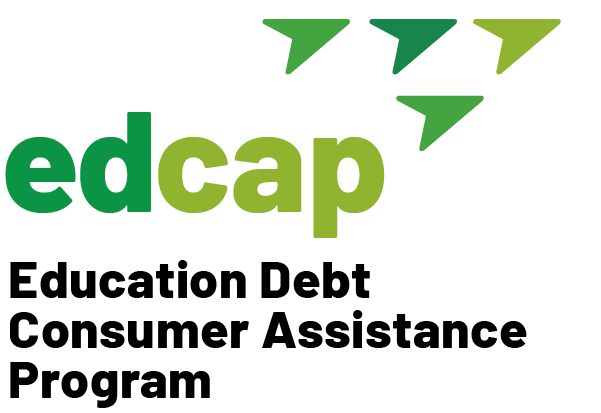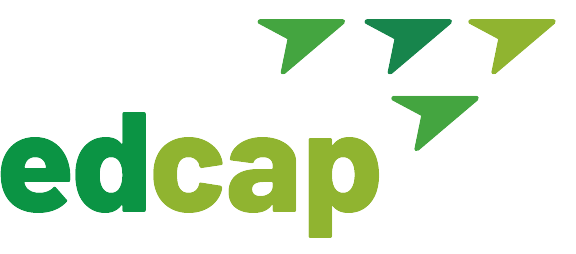Types of Student Loans
Federal Student Loans
Federal student loans are issued and administered by the U.S. Department of Education and are available for students attending approved higher education institutions. Federal loans should be your first choice when it comes to borrowing for college. They typically offer more protections, lower monthly payments based on income, a fixed interest rate, and access to forgiveness, disability discharge, and debt relief programs.
Federal Student Loans in Detail
Direct Subsidized Loans
These loans are awarded based on FAFSA-defined financial need. The government pays the interest while you’re in school at least half-time, during the grace period, and during deferment periods.
Direct Unsubsidized Loans
Available to both undergraduate and graduate students. These loans are not based on financial need. Interest accrues from the moment they are disbursed, including while in school.
Parent PLUS Loans
These loans are available to parents of dependent undergraduate students. Qualifying for a Parent PLUS loan is relatively easy since it’s not based on family income, assets, or outstanding debt. The main requirement is not having an adverse credit history, such as defaulting on debts, having debts discharged through bankruptcy, or having tax liens.
These loans are unsubsidized, have a fixed interest rate, but have fewer repayment plan options, and cannot be transferred to the child. Parents can borrow up to the cost of attendance (tuition, room and board and personal expenses) minus financial aid offered to the student. Because borrowing limits can reach up to the cost of attendance, it may be easy to take on an unmanageable debt burden.
Graduate PLUS Loans
These loans are available to graduate or professional students. Like Parent PLUS loans, they are unsubsidized and require a credit check. Students may also borrow up to the cost of attendance.
Direct Consolidation Loans
Allows you to combine multiple federal student loans into one or two loans with one monthly payment. This can simplify repayment. Consolidation may be beneficial in some cases but if you are pursuing a forgiveness program, like Public Service Loan Forgiveness, understand the consequences of consolidation.
Private Student Loans
Private student loans are offered by banks, credit unions, and other private lenders. These loans often require a credit check and may have variable interest rates and less flexible repayment options compared to federal loans. They should be your last resort since they are frequently the most expensive, depending on the borrower’s credit. If you must take them out, fixed-rate loans are generally safer and more predictable.
Private loans can be used when federal loans, grants, and scholarships don’t cover all educational costs. They typically require a good credit score, proof of earnings, or a co-signer.
Private Loans: Key Differences from Federal Loans
- Interest Rates: Have fixed or variable rates, which can be higher than federal rates.
- Repayment Terms: Less flexible repayment options..
- Protections: Fewer borrower protections like deferment and forgiveness options and extremely difficult to release a cosigner. Private loans, however, are subject to a statute of limitations.
Interest Rates
Interest is the cost of borrowing money, calculated as a percentage of the loan balance. For federal loans, rates are fixed throughout the life of the loan. Private loans may have fixed or variable interest rates.
Three Strategies for Tackling Student Debt
Most borrowers will select one of three paths when it comes to tackling their student loan debt. Knowing what path you will pursue is important as it will help determine the best repayment plan. If you need help selecting a plan, use our self-guided repayment strategy tool.
1. Paying Off Debt Quickly
- Best For: Borrowers with low loan balances relative to their income.
- Strategy: Make lump sum payments or pay more than the minimum required each month.
- Goal: Reduce the loan balance quickly, minimizing interest paid over time.
- Tips: Contact your servicer to ensure extra payments are properly applied.
2. Paying the Minimum for Forgiveness
- Best For: Borrowers with high loan balances with low-to-moderate incomes.
- Strategy: Make minimum payments and pursue forgiveness through programs like PSLF or IDR Forgiveness.
- Goal: Pay minimum required payments while meeting forgiveness criteria.
- Tips: Ensure you meet program requirements and track progress. If you are pursuing this strategy, making extra payments on your debt is not advisable. Your goal is to get the most forgiveness possible.
3. Paying the Minimum Until The End
- Best For: Borrowers who cannot realistically pay off their loans or achieve forgiveness.
- Strategy: Make the minimum required payments under the cheapest repayment plan.
- Goal: Manage debt sustainably without focusing on early repayment.
- Tips: Be comfortable with carrying this debt knowing that federal student loans are discharged upon death, so they do not pass on to your estate or beneficiaries.
Repayment Plans for Federal Loans
There are two buckets of federal student loan repayment plans: Income Driven Repayment and traditional plans.
Key Differences: Income Driven vs. Traditional Repayment Plans
Income-Driven Repayment Plans | Traditional Repayment Plans | |
Pros |
|
|
Cons |
|
|
Plan Names |
|
|
*10 year forgiveness only available to borrowers in SAVE with original loan balances of $12,000 or less.
Income Driven Repayment (IDR) Plans in Detail
Under IDR Plans, payments are based on income, family size and tax-filing status. They forgive remaining balances after making 10-25 years of payments with no employment requirement, or just 10 years under Public Service Loan Forgiveness. You must recertify these plans every year because they are based on your income. You can enroll in an Income Driven Repayment plan online at studentaid.gov/idr.
ALERT: Please be advised that the SAVE IDR plan is temporarily blocked by a court order. Learn more.
Compare the IDR Plans
Saving on a Valuable Education (SAVE) | Pay As You Earn (PAYE)** | Income Based (IBR) (New Borrowers) | Income Based (IBR) | Income Contingent (ICR)*** | |
Eligibility | All Direct Loan borrowers | Income-eligible, Direct loan borrowers (cannot have outstanding Direct or FFEL loans issued before 10/1/2007 and must have Direct loans issued on/after 10/1/2011) | Income-eligible Direct loan borrowers (first loans issued on/after 7/1/2014) | Income-eligibleDirect or FFEL loan borrowers (any loans issued before 7/1/2014) | All Direct Loan borrowers |
Monthly Payments | 5-10% of borrower’s discretionary income* | 10% of borrower’s discretionary income | 10% of borrower’s discretionary income | 15% of borrower’s discretionary income | The lesser of 20% of borrower’s discretionary income or the loan balance amortized over 12-years and adjusted for income |
Repayment Term | 10-20 yrs (if you have only undergrad loans) 10-25 yrs (if you have any graduate loans) | 20 yrs | 20 yrs | 25 yrs | 25 yrs |
Pros | Outstanding balance forgiven after 10-25 yrs; interest subsidy; & lowest monthly payments* | Outstanding balance forgiven after 20 yrs & lower monthly payments | Outstanding balance forgiven after 20 yrs & lower monthly payments | Outstanding balance forgiven after 25 yrs | Outstanding balance forgiven after 25 yrs |
Cons | Forgiveness loan balance may be subject to income tax after 2025 | Forgiveness loan balance may be subject to income tax after 2025 | Forgiveness loan balance may be subject to income tax after 2025 | Forgiveness loan balance may be subject to income tax after 2025 | Limited forgiveness due to high monthly payments. Forgiveness loan balance may be subject to income tax after 2025 |
*For SAVE, the monthly payment is capped at 5% of discretionary income if you have only undergraduate loans and 10% if you only have graduate loans. If you have both, it will be a weighted average between 5-10%.
**PAYE will not be available to borrowers not already enrolled in the plan from 7/1/24.
***ICR will not be available to non-Parent Plus borrowers not already enrolled in the plan from 7/1/24.
Traditional Repayment Plans in Detail
Under traditional plans, monthly payments are based on the loan balance, interest rates and a set payback period. These plans are not eligible for forgiveness and are best suited for people who can pay off their debt within a reasonable time, those not pursuing a federal forgiveness program, or those with high income who simply cannot afford an Income Driven Repayment plan. To enroll in a traditional plan, you must contact your student loan servicer.
Compare the Traditional Plans
Standard Plan | Graduated Plan | Extended Plan | |
Eligibility | Direct and FFEL Loan borrowers (consolidated or unconsolidated loans) | Direct and FFEL Loan borrowers (consolidated or unconsolidated loans) | Borrowers with at least $30,000 in unconsolidated loans or between $40,000 and $59,999 in consolidated loans |
Monthly Payments | Remains Fixed over the life of the loan | Increases every two years over the life of the loan | Fixed or increases over time |
Repayment Term | 10 yrs (up to 30 yrs for Consolidation Loans) | 10 yrs (up to 30 yrs for Consolidation Loans) | 25 yrs |
Pros | Pay less in interest over time. Ideal if your income is high enough to comfortably cover the payments. | Lower monthly payment initially. Ideal if you expect your income to grow over time. | Lower monthly payments. Suitable for those needing lower monthly payments. |
Cons | High monthly payments | Payments increase throughout the repayment period | Pay more in interest |
What’s next?
Determine your student loan repayment strategy, keeping in mind that your approach might involve not paying off your entire balance, but instead pursuing forgiveness options.
Use our Determine Your Student Loan Repayment Strategy Tool if you want guided assistance.
Then enroll in a repayment plan that aligns with your strategy and start making on-time monthly payments.
Use our Student Loan Repayment Checklist to make sure you’re all set to go!








